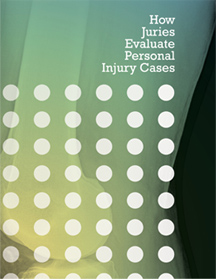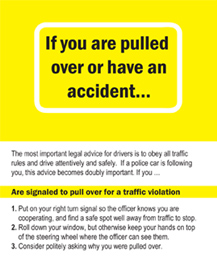Car accidents — Investigation — Taking photographs of the car accident scene
As part of the investigation, your personal injury lawyer may want photographs of the scene where your car accident took place. Your lawyer may have an investigator take these photographs, or may ask you to return to the accident scene to take photographs.
If your injury lawyer asks you to take photographs, the guidelines here will help you know what pictures to take.
Camera settings
If you are using a digital camera, set the camera to use the maximum image size (number of pixels) and image quality (compression ratio). That way the photograph can be enlarged or projected and still not be fuzzy.
If you are using a camera that has a zoom feature, do not use the zoom feature for the views of what the driver could see. After you have taken the checklist photos of what the driver could see, then if you want you can take extra photos using the zoom feature of your camera.
Take the following photos of the car accident scene
- Driver 1 — Traffic Control Signs Views. Start traveling on the roadway in the direction that Driver 1 was traveling. Beginning two city blocks away from the car accident area (or if this is on a highway or country road, start a quarter mile away from accident scene). Photograph every traffic control sign that there is all the way to the accident scene.
- Driver 1 — 200-foot Approach Views. Take two photographs from the same place about 200 feet from the impact point. Both photographs should be at the driver’s eye level. The two photographs should be:
- (1) straight toward intersection to point of impact of cars as Driver 1 could see it, and
- (2) toward the direction from which the second car involved came. (This is to show visibility between cars as they approached each other.)
- Driver 1 — 100-foot Approach Views. Repeat same type of photos as in the previous item. The only difference is to take this set of two photos from about 100 feet from the impact point.
- Driver 1 — Roadway Impact Area View. Take a photograph about 25 feet from the point of impact on the roadway (in the direction from which the Driver 1 came). This will include such items as tire marks and point of impact debris, if any.
Note: The following four items are a repeat of the first four items but the photos are taken from the second driver’s viewpoint.
- Driver 2 — Traffic Control Signs Views. Start traveling on the roadway in the direction that Driver 2 was traveling. Beginning two city blocks away from the accident area (or if this is on a highway or country road, start a quarter mile away from accident scene). Photograph every traffic control sign that there is all the way to the accident scene.
- Driver 2 — 200-foot Approach Views. Take two photographs from the same place about 200 feet from the impact point. Both photographs should be at the driver’s eye level. The two photographs should be:
- (1) straight toward intersection to point of impact of cars as Driver 2 could see it; and,
- (2) looking toward the direction from which the first car involved came. (This is to show visibility between cars as they approached each other.)
- Driver 2 — 100-foot Approach Views. Repeat same type of photos as in the previous item. The only difference is to take this set of two photos from about 100 feet from the impact point.
- Driver 2 — Roadway Impact Area View. Take a photograph about 25 feet from the point of impact on the roadway (in the direction from which the Driver 2 came). This will include such items as tire marks and point of impact debris, if any.
- Tire Marks, Road Scars, and Debris Views. If there are track marks or debris left on the road that came from the car accident, photograph each item twice. First, by standing looking parallel to the roadway sides, take a photo end-on the item to show the direction of the debris or marks, and second, side-on to show the length of the marks. Then lay a foot-long ruler or some other item that a juror can identify with on the roadway to show the scale of the item on the roadway. Take another photo with this item in the photo.
- Witness Views. If there was a witness, photograph the scene of the car accident from the viewpoint of the witness.



